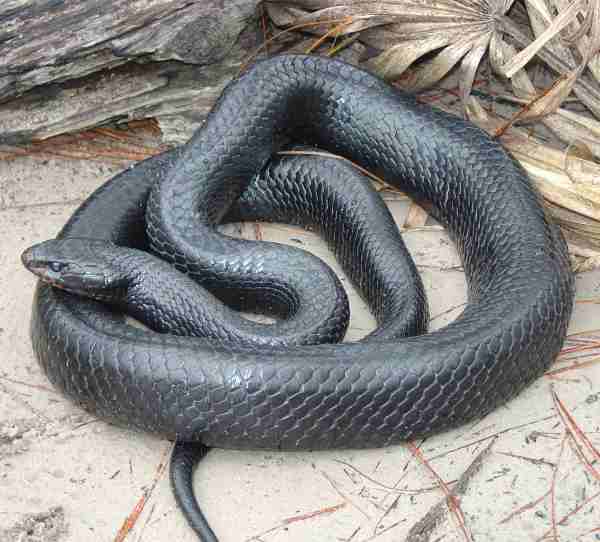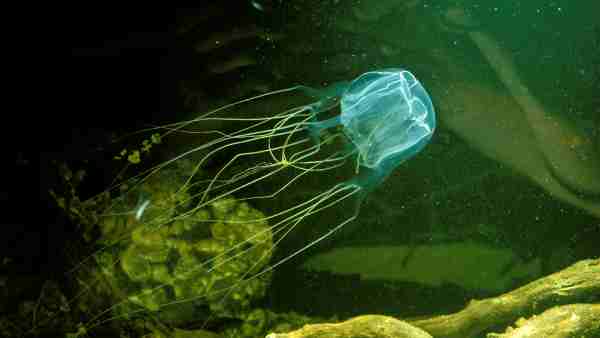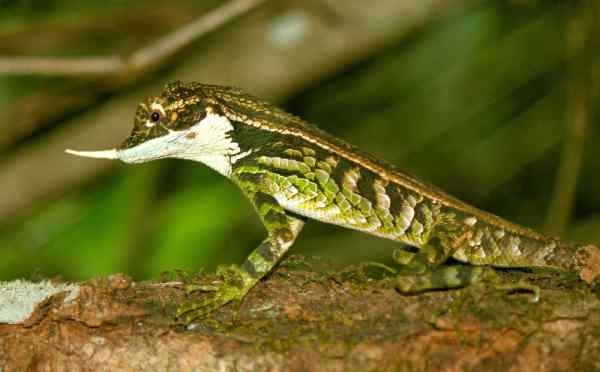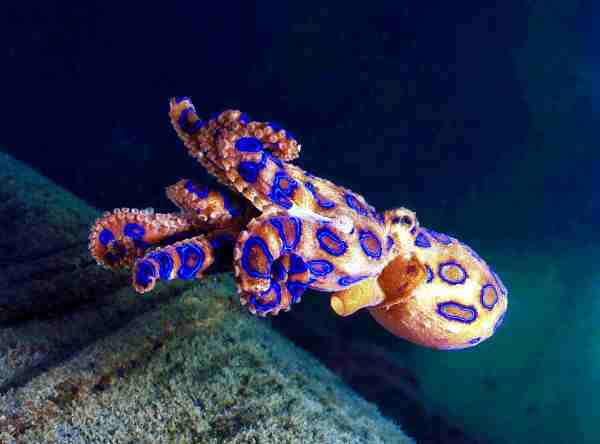The sounds animals make can be broadly classified into two types: vocal and mechanical. Animals use vocal sounds for a variety of purposes, such as asserting dominance, attracting mates, issuing territorial warnings, responding to threats, or communicating with other members of their species. Mechanical noises, on the other hand, are sounds that animals produce while they are eating, moving, or fighting.
Table of Contents
For most animals, producing sounds is an essential part of their daily lives. However, some animals are notably quiet and make little or no sounds. Examples of such animals include rabbits, giraffes, snakes, worms, and jellyfish. These animals do not use their mouths to communicate or produce sounds.
Rabbits

Scientific Name: Oryctolagus cuniculus
Class: Mammalia Diet: Herbivore
Rabbits, also known as bunnies, are small and delightful creatures that inhabit all parts of the world except Antarctica. Due to their affectionate personalities, these little rodents are popular indoor pets.
Fun fact: A rabbit’s teeth never stop growing, and can grow up to 5 inches each year!
Despite not having vocal cords, bunnies are not completely silent. When stressed or threatened, they can make various noises, such as growling, hissing, or snorting. However, if your pet bunny is usually quiet, there’s no need to worry, as this is perfectly normal behaviour.
Snakes

Class: Reptile Diet: Carnivore
Snakes are a diverse group of animals, with over 3,000 species found throughout the world. While some people may find them intimidating, their quiet nature can also be unsettling.
Fun fact: Snakes don’t have external ears, and instead rely on ground vibrations to detect sounds!
Similar to rabbits, snakes have a small larynx and lack vocal cords, so they are unable to produce most types of sounds. However, they are capable of making some noise, with hissing being the most common. Snakes may also rattle or rub their scales together to create sound.
There is one exception to this rule, which is the Pine snake. It is the only species of snake known to have vocal cords, although it rarely uses them and is still considered a relatively quiet animal. Instead of relying on vocal communication, snakes use chemical cues to detect the presence of other snakes in their environment.
Giraffes

Scientific Name: Giraffa
Class: Mammalia Diet: Herbivore
Giraffes are majestic creatures that inhabit the open woodlands and grasslands of Africa. They are the largest land animals and ruminants in existence.
Fun fact: Due to their long legs and necks, giraffes are not capable of swimming!
While giraffes may be completely silent, they make sounds that are too low-frequency for humans to hear. In addition to infrasonic communications, giraffes may produce hissing and grunting sounds when threatened. Apart from vocal communication, they also rely on a variety of non-verbal cues such as body posture, eye movements, and physical touch to communicate with each other.
Mating giraffes may even use their long necks as a weapon in fights.
Snails

Scientific Name: Gastropoda
Class: Mollusca Diet: Herbivore, Carnivore, Herbivore
Snails are gastropod creatures that can be found in various habitats. They are nocturnal and primarily feed on decaying organic matter.
Fun fact: Snails have an astonishing 20,000 teeth, more than any other animal species!
We all know the common saying “slow as a snail”, but perhaps we should also say “silent as a snail”. Snails do not have vocal cords and are completely silent animals. The only sounds they produce are mechanical, such as while eating or retracting into their shells. However, these sounds are not intentionally produced by the snail and are simply a result of their physical movements.
Sloths

Scientific Name: Folivora
Class: Mammal Diet: Herbivore and Omnivore
Sloths are peculiar animals that are indigenous to the tropical forests of Central and South America. The three-toed sloth’s diet consists entirely of plants, while the two-toed sloth eats insects, leaves, fruits, and even small mammals.
Fun fact: Sloths are one of the slowest animals in the world, crawling at a speed of only 1 foot per minute!
Aside from being incredibly slow, sloths are also very quiet animals. However, baby sloths are known to emit high-frequency squeaks when frightened or left alone. Adults, on the other hand, produce low-pitched sounds that are typically associated with stress or fear.
Worms

Scientific Name: Lumbricina
Class: Oligochaeta Diet: Omnivore
Rewritten: Worms are invertebrate animals that reside in soil or water bodies. They come in a range of sizes, from tiny to over 3 feet in length. Their diet mostly consists of living organisms such as bacteria, fungi, and protozoans.
A fun fact about worms is that they lack lungs and breathe through their skin.
Despite their lack of vocal cords, worms are capable of communicating with each other through touch and taste. Additionally, they use their ability to sense vibrations in the ground to detect the presence of predators and avoid danger.
Jellyfish

Scientific Name: Chrysaora
Class: Cnidaria Diet: Carnivore
Jellyfish, with their characteristic umbrella-shaped bodies, are a type of marine animal that can be found in all parts of the world’s surface waters and deep seas.
Fun fact: some species of jellyfish are capable of being immortal.
As they lack a brain and any kind of vocal cords, jellyfish are completely silent creatures. However, researchers suggest that they may use bioluminescent displays to communicate with each other or attract prey.
Turtles

Scientific Name: Testudines
Class: Reptile Diet: Omnivore
The turtle is a peaceful creature that is recognized by its protective shell. These animals have inhabited various continents and oceans, and have been around for 220 million years.
Fun Fact: Although people often confuse turtles and tortoises, they are actually two different species!
Even though turtles do not possess vocal cords, some species are capable of creating high-pitched sounds. These noises are produced by their lungs and can include hissing, grunting, honking, and moaning.
Regarding their communication with one another, turtles mostly rely on non-verbal cues like biting, splashing water, and blinking.
Lizards

Scientific Name: Lacertilia
Class: Reptile Diet: Omnivore
Lizards are a diverse group of animals with around 6,000 different species found all around the world, except for Antarctica. Their size can vary greatly, ranging from just a few inches to over 10 feet in length.
Fun Fact: Some lizard species have the remarkable ability to shed and regrow their tails!
Lizards are not known for their vocal abilities, and acoustic communication is uncommon. Hissing is the most common sound that lizards make, often used as a warning signal. However, certain types of lizards such as geckos and iguanas use more complex vocalizations for courtship and territorial defence. These sounds can include barks, growls, squeaks, and clicks.
Crabs

Scientific Name: Brachyura
Class: Phylum arthropods Diet: Omnivore
Crabs are creatures with ten legs, easily identifiable by their single pair of claws. While they are primarily found in oceans, they can also inhabit both land and water environments.
Fun Fact: The largest crab species in the world is the Japanese crab, which can measure up to 12 feet in size!
Although typically quiet, crabs have developed a unique communication method known as stridulation. This uncommon technique involves rubbing their claws against their legs to produce sounds for communication purposes.
Sharks

Scientific Name: Selachimorpha
Class: Chondrichthyes Diet: Carnivore
Sharks are among the most hazardous fish species found in various aquatic environments, ranging from shallow waters to the deepest parts of the ocean. With around 500 distinct shark species, none are capable of producing any sounds.
Fun Fact: The biggest fish in the world is the whale shark!
Sharks are the silent assassins of the sea. Their unique scales enable them to move stealthily and swim without making any noise. This trait is one of the reasons why sharks are considered to be the top predators in the underwater world. Communication between sharks primarily takes place through physical touch, smell, gaping, and electromagnetism.
Goldfish

Scientific Name: Carassius auratus
Class: Ray-finned fishes Diet: Omnivore
Contrary to popular belief, not all fish are silent. While goldfish, a popular aquarium pet, cannot produce vocalizations, many other fish species are capable of making various sounds.
Fun Fact: Goldfish have a lifespan of over 40 years!
Although goldfish cannot vocalize, they have excellent hearing abilities. They mainly communicate with each other through body language, such as fin movements and colour changes. As for pet goldfish, they may surface when they are hungry, indicating their need for food.
Butterfly

Butterflies are a type of insect that belong to the order Lepidoptera, and they are one of the most well-known insects due to their vibrant colours and delicate wings. These creatures are unique in that they make no sounds, making them a part of the group of animals that are characterized as noiseless.
Fun Fact: Butterflies can see ultraviolet light, allowing them to detect things that humans cannot see.
Butterflies are known for their incredible life cycle that consists of four stages: egg, caterpillar, chrysalis, and adult butterfly. During the caterpillar stage, these insects grow rapidly, shedding their skin several times, and consuming large amounts of leaves. Once they enter the chrysalis stage, they undergo metamorphosis and transform into their adult form.
Octopus

Scientific Name: Octopoda
Class: Cephalopods Diet: Carnivore
Octopuses are unique and peculiar marine creatures recognized by their bulbous heads and eight arms. While baby octopuses feed on sea stars, larval crabs, and copepods, adult octopuses’ diet comprises snails, fish, crabs, and clams.
Fun Fact: Octopuses have nine brains, one for each arm and a central brain!
Octopuses are silent predators and do not produce any sounds while hunting. When communicating with each other, they use a wide range of signals, such as arm movements, body posture, and colour changes, as a means of interaction.
Reference:
https://www.turito.com/learn/biology/vocalization-of-animals-grade-7
https://www.nytimes.com/2014/10/07/science/our-understanding-of-giraffes-does-not-measure-up.html#
https://childrensmuseumatlanta.org/music-mondays-pitch-exploration-pt-2/

Zahra Makda
Growing up enjoying the beauty of my village, a good passion for nature developed in me from childhood. Following my passion for the natural world, I have chosen zoology for my graduation, during my undergraduate degree, I participated in many nature trails, bird watching, rescues, training for wildlife conservation, workshop, and seminars on biodiversity. I have a keen interest in invertebrate biology, herpetology, and ornithology. Primary interests include studies on taxonomy, ecology, habitat and behavior.









